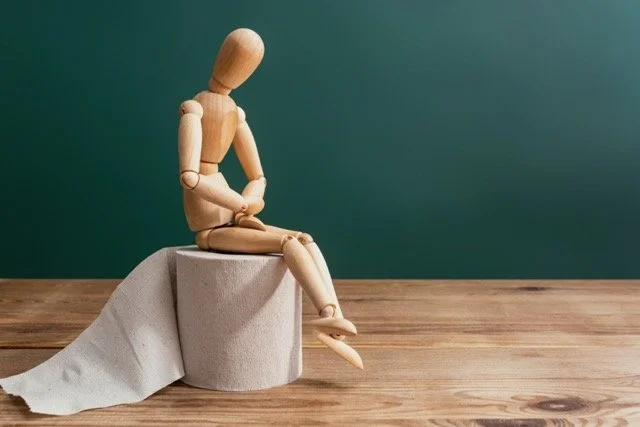Bile Acid Malabsorption: Causes, Symptoms, and Natural Approaches
What is BAM?
Bile Acid Malabsorption (BAM) is a condition that affects the absorption of bile acids in the digestive system, leading to a range of symptoms, the main one being diarrhea. While medications are often prescribed to manage BAM, there are also natural approaches that individuals can explore to alleviate symptoms and improve overall digestive health.
The Role of Bile Acids in Digestion
Bile acids play a crucial role in the digestion and absorption of fats as well as fat-soluble vitamins (A, D, E, K) in the small intestine. In a healthy digestive system, bile acids released from the liver are stored in the gallbladder and released into the small intestine after meals. These bile acids aid in the emulsification of fats, breaking them down into smaller particles that can be easily absorbed by the intestinal lining.
In the context of BAM, the normal reabsorption of bile acids in the latter part of the small intestine - the ileum - is disrupted, leading to an excess of these acids in the colon. Bile acids in your colon irritate the mucous lining and to counteract this acidity, the body will draw water to the colon and speed up the muscle contractions that move poop along. This leads to watery stools, urgent diarrhea and cramping.
Causes of Bile Acid Malabsorption
Sometimes, the exact cause of Bile Acid Malabsorption can’t be determined. That being said, BAM can be attributed to various factors, including:
Irritable Bowel Syndrome (IBS)
BAM is commonly associated with IBS-D, a gastrointestinal disorder that affects the intestines and cause diarrhea. In some cases, IBS can lead to alterations in the normal absorption of bile acids.
Inflammatory Bowel Disease (IBD)
Conditions like Crohn's disease and Ulcerative colitis, both categorized under IBD, can contribute to BAM due to inflammation and changes in the structure of the intestines.
Surgical Interventions
Surgeries involving the removal of parts of the small intestine such as the ileum (bowel resection), gallbladder removal (cholecystectomy), or other gastrointestinal surgeries like the gastric bypass can disrupt the normal absorption of bile acids.
Functional Gastrointestinal Disorders
Disorders that affect the function of the gastrointestinal tract, such as Small intestinal bacterial overgrowth (SIBO), can lead to BAM. SIBO is known for an abnormal presence of bacteria in the small intestine. These bacteria in the small intestine can deconjugate bile acids, rendering them less absorbable and thus contributing to BAM.
Symptoms of Bile Acid Malabsorption
Identifying the symptoms of BAM is crucial for proper diagnosis and management. Common symptoms include:
Diarrhea: Chronic and watery diarrhea is a hallmark symptom of BAM.
Urgency to Defecate: Urgency to pass stools and incontinence (accidents) can occur due to the increased fluid content in the intestines.
Abdominal Pain: Individuals with BAM usually experience abdominal pain, cramping, and discomfort.
Fatigue: The malabsorption of bile acids will reduce the absorption of fat-soluble vitamins (A,D,E &K), potentially leading to fatigue and nutritional deficiencies.
How to Diagnose BAM
Getting a diagnosis for bile acid malabsorption (BAM) can sometimes be difficult. The standard tests require a high-fat diet and collecting all your bowel movements for three consecutive days, which many find daunting and challenging (understandably).
Fortunately, there are alternative ways to investigate BAM. One is a steatocrit test (as seen on many microbiome stool reports such as the GI-MAP), which measures the fat content in your stool (one bowel movement and no diet change necessary). While not definitive, a high steatocrit may indicate BAM.
Another option is a trial of cholestyramine medication, which is a bile acid sequestrant. If your symptoms improve while taking cholestyramine, it's a strong indication that BAM could be contributing to your problems.
Natural Approaches to Manage BAM
While medications are often prescribed for BAM, such as bile acid sequestrants (cholestyramine) or even anti-diarrhea (loperamide), several natural approaches can complement traditional treatment methods or be good alternatives if you are looking to skip medications altogether:
Dietary Modifications
Adopting a low-fat diet (40g of fat per day or less), especially avoiding poor-quality fats like vegetable oils, and avoiding trigger foods such as fried foods can help manage symptoms. However, fats are essential for good health and should not be avoided completely. Gradually reintroducing good fats such as Avocado, Extra Virgin Olive Oil and Ghee and observing the body's response can guide dietary choices.
Probiotics
Probiotics can support gut health by promoting a balanced intestinal environment. Consider incorporating probiotic-rich foods like yogurt and fermented vegetables.
Fiber Intake
Soluble fiber, found in fruits, vegetables, psyllium husk, and oats, can help absorb excess bile acids and regulate bowel movements. I usually trial my clients with potential BAM with psyllium husk first as it can act as a great binder.
Hydration
Staying adequately hydrated is crucial, especially given the fluid loss associated with diarrhea. Replenishing fluids with essential minerals helps maintain balance in the body. Add a pinch of sea salt to your water whenever possible.
Mind-Body Techniques
Stress management techniques such as mindfulness, EFT, meditation, and yoga may help alleviate symptoms by influencing gut function.
Bile Acid Malabsorption can significantly impact an individual's quality of life, but there are natural approaches that can be explored in conjunction with medical interventions. By understanding the causes, recognizing symptoms, and adopting lifestyle modifications, individuals with BAM can work towards managing their condition and promoting digestive wellness.

